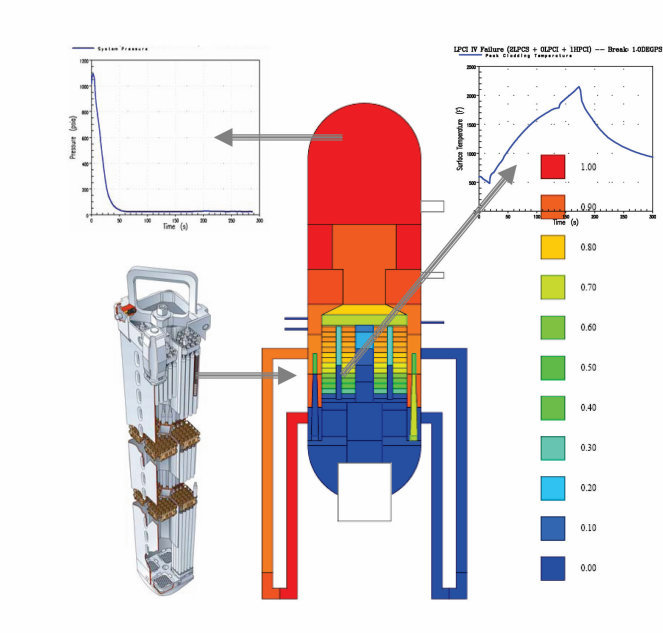Westinghouse offers engineering services in various areas related to boiling water reactor (BWR) safety analysis. These include fast and slow transients, stability, loss-of-coolant accident (LOCA), and containment analysis. LOCA analysis is performed using the Westinghouse BWR Emergency Core Cooling System (ECCS) Evaluation Model. This model uses GOBLIN series of codes and complies with the NRC 10CFR50, Appendix K requirements; it was initially approved by the NRC in 1989. Since then, the methodology has been improved and adapted for a range of fuel types. Several supplements have been submitted to the original topical report with the most recent supplement extending the capabilities to SVEA-96 Optima2 fuel. This supplement was submitted and approved by the NRC in 2004.
The GOBLIN series of codes is a system of computer codes that uses one-dimensional assumptions and solution techniques to calculate the BWR transient response for both large- and small-break LOCAs. The system of codes comprises three major computer programs to include GOBLIN, DRAGON, and CHACHA-3D. The functions of the individual computer programs are as follows.
LOCA analysis provides the necessary safety limits for NRC 10CFR50.46 compliance. It additionally provides flexibility by supporting various options, such as singleloop operation and different equipment out-of-service scenarios.
In the U.S., the following BWR units were analyzed using the Westinghouse BWR ECCS Evaluation Methodology:
Westinghouse also has LOCA analysis experience with European plants, such as Leibstadt, Oskarshamm, Ringhals,
